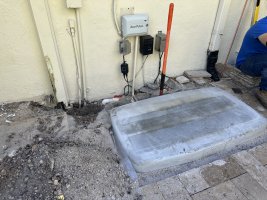jar546
CBO
Elevation certificates are required for mechanical equipment such as generators being installed in special flood hazard areas because they provide important information about the elevation of the equipment relative to the base flood elevation (BFE) of the area. This information is used to ensure that the equipment is installed at an appropriate elevation to reduce the risk of flooding and damage during a flood event.

- Compliance with Floodplain Management Regulations: Elevation certificates are typically required by local building and zoning codes as part of the compliance process for installing equipment in a special flood hazard area. This helps to ensure that the equipment is installed in a way that meets local regulations and reduces the risk of flooding.
- Flood Insurance: Elevation certificates are also used by insurance companies to determine the flood insurance rate for a property. If the equipment is installed above the BFE, the insurance rate may be lower because the risk of flooding is considered to be lower.
- Flood Protection: Elevation certificates provide information that can be used to design and install equipment in a way that reduces the risk of flooding. This can include installing equipment on elevated platforms or building floodwalls around the equipment.
- Safety: By installing equipment above the BFE, the risk of damage to the equipment and injury to personnel during a flood event is reduced.
- Resilience: When equipment is installed above the BFE, it may be less likely to be affected by flooding and can continue to function during and after a flood event, which can be critical for safety and emergency services.

